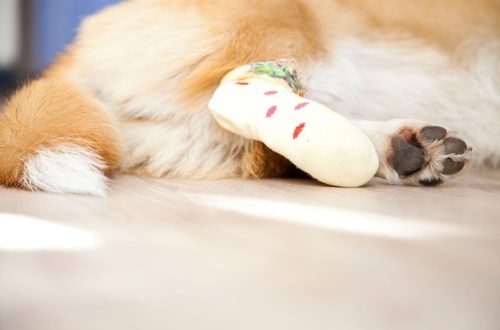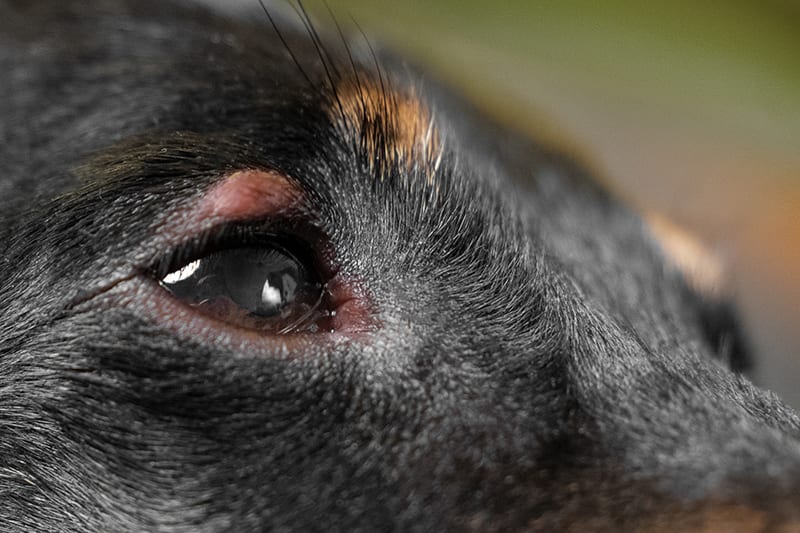
Conjunctivitis in dogs
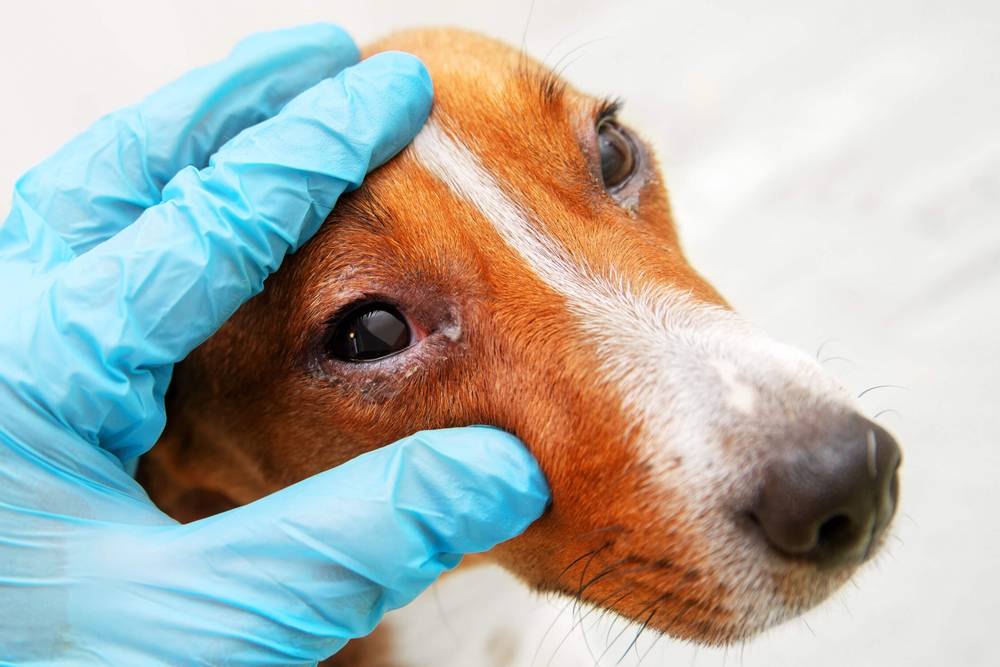
Conjunctivitis may be genetically predisposed. If you have a brachycephalic dog (such as a bulldog, Pekingese, or pug), it is more likely to develop conjunctivitis. Dogs with breed ptosis, i.e. drooping of the lower eyelid, also require special attention. These include Basset Hounds, Spaniels, Newfoundlands, St. Bernards, Great Danes, Chow Chows and other breeds of the Molossian group. However, even if your dog does not belong to the above breeds, there is a risk that he may develop eye pathology.
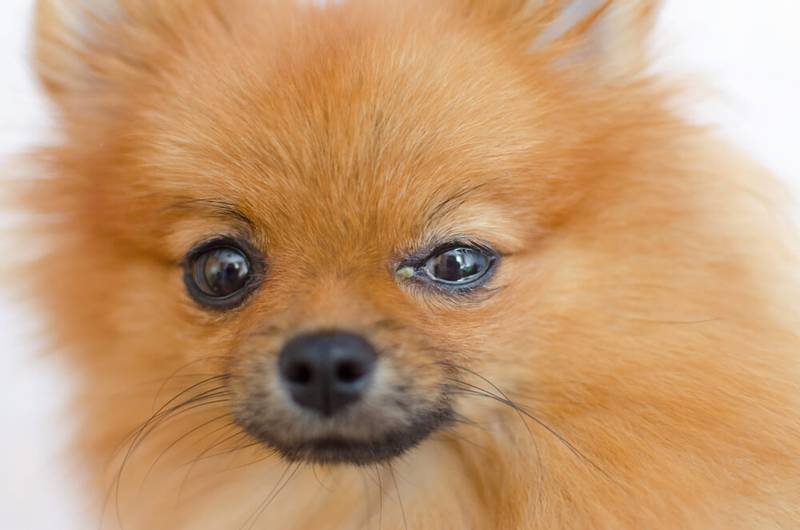
Contents
Causes of appearance
First of all, it is important to understand that conjunctivitis in dogs is most often a secondary process. Unlike, for example, cats, in which the most common cause of this disease is viral and bacterial infections, in dogs, this inflammatory process occurs due to provocation by some other primary factors. These include the omission of the eyelid already mentioned above, as well as its inversion and eversion – these are characteristic features of the anatomy of the eye for many breeds of dogs. If your pet belongs to this group of dogs, preventive examinations by a veterinary ophthalmologist throughout life will not be superfluous. A preventive examination is also necessary when acquiring a friend of one of these breeds, because in some cases surgical treatment is required to improve the quality of life and comfort of the dog, and this is an important factor when choosing a pet.
Other causes include trichiasis (the eyelashes or hair on the lower eyelids are traumatized), districhiasis (a double row of eyelashes on the upper, lower or both eyelids), an ectopic eyelash (that is, an eyelash that grows at right angles to the cornea of uXNUMXbuXNUMXbthe eye and injures it with every movement of the eyelids). ). Constant trauma leads to chronic inflammation, which is quite uncomfortable for the dog, but may not be noticeable to the owner. This is a congenital anomaly, it is also detected on an internal examination by an ophthalmologist and requires surgical intervention.
In addition, any other eye injury also leads to the development of conjunctivitis and other serious diseases that, if not treated in time or incorrectly, can lead to loss of vision and eyes.
A very common problem is KCC, keratoconjunctivitis sicca caused by a lack of tears (more on this later).
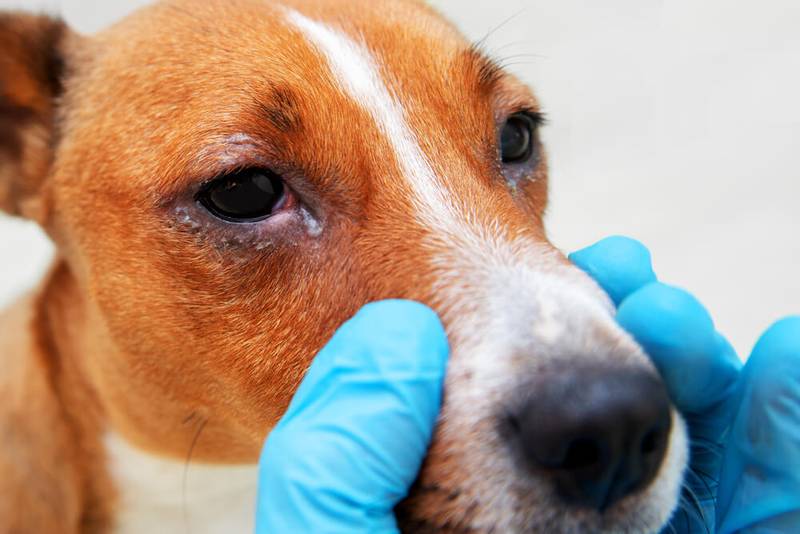
Symptoms of conjunctivitis in dogs
The most common manifestations include hyperemia (redness) of the mucous membrane of the eye and its swelling, blepharospasm (the dog squints its eyes). In the more acute phase, owners may notice discharge or discharge from the dog’s eye, which can be of a different nature – purulent or mucous. It is important to remember that no discharge from the conjunctival sac is normal, and only an examination by an ophthalmologist and specialized tests will help determine its nature and the exact cause of the appearance.
One of the common symptoms of conjunctivitis is epiphora – chronic lacrimation. Since this condition goes on without dynamics for a long time, it is difficult to understand the need for a visit to a specialized specialist, however, the diagnosis and correction of this eye problem will lead to the elimination of discomfort and a significant improvement in the quality of life of your pet.
Other more obvious symptoms of conjunctivitis include itching, the dog may scratch his eyes with his paws, while only worsening the course of the disease, as it can injure the eyes and cause a secondary infection, and this will aggravate the course of the disease.
Also in some cases there is photophobia and baldness of the skin around the eyes.
All of the above signs can be on one eye or on both, can be in different combinations or appear with different intensity. All signs are not pathognomonic, that is, specific for one disease, namely conjunctivitis. A key role in the diagnosis is played by the availability of specialized equipment, without which the assessment of eye function is impossible, as well as ophthalmological tests.
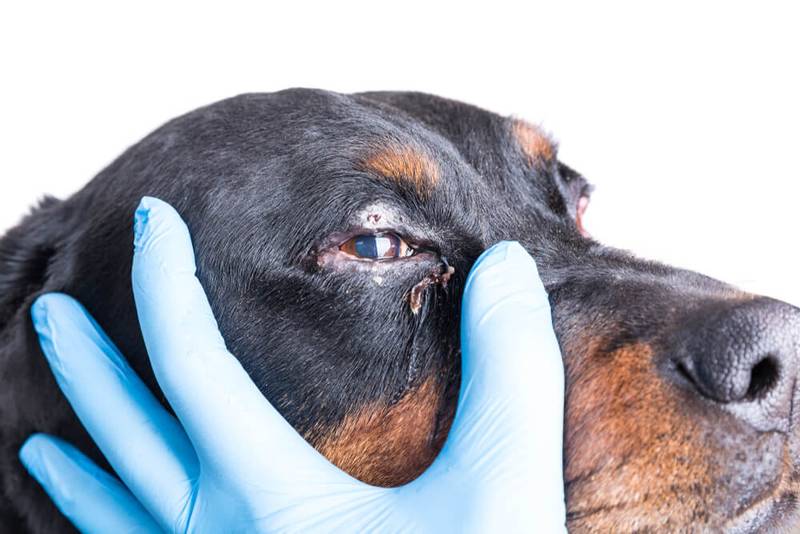
Types of disease
The disease can be classified depending on the cause of occurrence – for example, traumatic, allergic, KKK (dry keratoconjunctivitis), or according to the type of outflow: serous, mucous, purulent.
Below we will take a closer look at the individual types of this disease.
Disease | Predisposition | Diagnostics | Treatment |
Allergic Conjunctivitis | French Bulldogs, Labradors, Sharpeis, Spaniels, West Highland White Terriers | Full-time examination, cytological examination of scrapings from the conjunctiva | Medication |
Dry keratoconjunctivitis (KCM / “dry eye syndrome”) | Pekingese, Chinese Crested, Yorkshire Terriers, Pugs, English Bulldogs, Shih Tzu, Poodles | Face-to-face examination, fluorescein test, Schirmer test | Medication (for life – Kornerogel or Oftagel) |
Follicular conjunctivitis | Large dog breeds at a young age | Full-time examination, identification of follicles | Medication |
Traumatic conjunctivitis | Pekingese, Pugs, Poodles, Dachshunds, Shetland Sheepdogs, Cocker Spaniels, English Bulldogs (eyelash growth disorder and conjunctival injury) | Eye exam, fluorescein test | Surgical and medical |
Allergic conjunctivitis in dogs
Contrary to popular belief, allergies are not the most common cause of conjunctivitis in dogs, therefore, before sinning on the usual dry food or favorite treats, it is worth eliminating the causes that are much more likely to lead to the development of conjunctivitis.
Nevertheless, a meeting with allergic conjunctivitis is possible, so we will consider it in a separate way. Symptoms will be characteristic of any other type of conjunctivitis, however, the seasonality of their resumption can be expressed. An allergen can be both food and environmental components. To make a final diagnosis in conjunction with the clinical picture, it is necessary to conduct a cytological examination of conjunctival scrapings. The presence of eosinophil cells confirms the diagnosis of allergic conjunctivitis in the dog and requires specific therapy.
Follicular conjunctivitis in dogs
It is typical for young dogs of large breeds (under the age of 18 months). A distinctive feature of this species is the presence of follicles, which can be seen with a closer examination of the dog’s eye. They can be located on the conjunctiva or on the third eyelid. It is a non-specific form of conjunctivitis, the exact causes of its development are not clear, since there is no convincing data proving one of the versions. Nevertheless, the role of chronic antigenic stimulation (allergic nature of the disease) or a mechanical agent that causes irritation of the conjunctiva (traumatic nature) is not excluded. Treatment involves exclusion of potential antigens and/or mechanically irritating agents and symptomatic therapy.
catarrhal conjunctivitis
In the modern ophthalmological classification, one can often find the definition of “mucous”, however, in older sources it was called catarrhal. However, more important than the definition is what is behind it. Most often, it is characteristic of such a chronic pathology as dry eye syndrome, or keratoconjunctivitis sicca (KCS). This pathology is associated with insufficient production of lacrimal secretion; Schirmer’s test is performed for diagnosis. When confirmed, lifelong therapy is prescribed – eye drops for moisturizing.
Purulent conjunctivitis
Purulent conjunctivitis is a form of conjunctivitis characterized by purulent discharge from the conjunctival sac. Unfortunately, this definition in itself does not characterize the cause of its development in any way, and, accordingly, it provides very little information to help the dog, and therefore (despite the fact that this definition is widespread in everyday life) it is rather useless, since can be caused by various reasons described above. And, as you already understood, the prognosis and treatment approach depend on the cause of conjunctivitis. Often, blind treatment of the symptoms of conjunctivitis leads to the development of relapses, since the cause has not been eliminated.
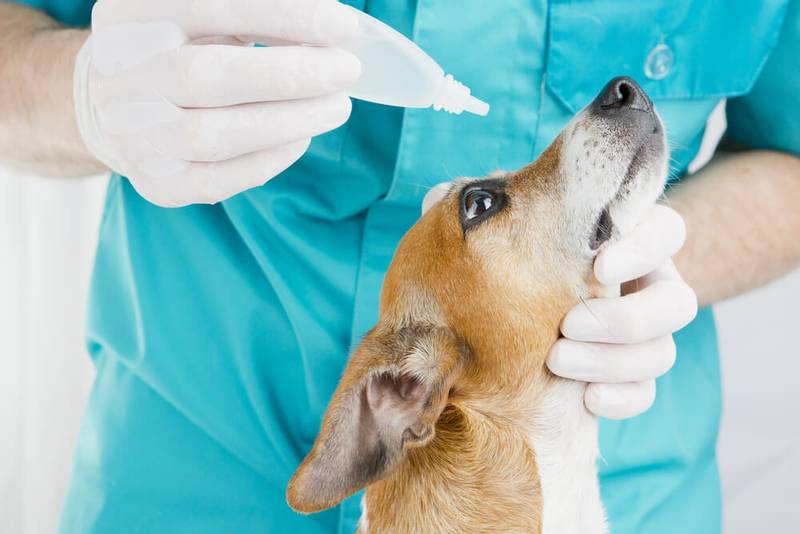
Treatment of conjunctivitis in dogs
“How to treat?” is a question that every owner asks. Of course, as you already understood, the treatment of conjunctivitis in a dog depends on the etiology (reasons for its development). It is important to understand whether there is a need for surgical treatment. Also, dogs are prescribed eye drops for conjunctivitis, but they should be used strictly according to the doctor’s prescription. Incorrect treatment can hide the necessary manifestations or aggravate the course of the disease. For example, the tea solution so beloved by many for washing is too dry and completely unsuitable for treating conjunctivitis in a dog.
Before starting treatment, it is necessary to conduct a diagnosis – for example, a fluorescein test to detect or exclude erosions and ulcers in the cornea, which may not be noticeable. In this case, you can not use drops with the addition of steroids.
If allergic conjunctivitis is detected, the allergen should be eliminated if it is identified and possible. And use drugs that stop the development of an allergic reaction: antihistamines (to achieve the effect, they must be taken well in advance of the onset of symptoms, subject to the seasonal severity of allergies), corticosteroids (they have a number of serious side effects, require examination of the animal and control of a veterinary therapist, are not optimal for use on an ongoing basis), cyclosporine (the effect is cumulative, but more optimal for long-term use).
All drugs, dosages and duration of use are considered in each case individually, taking into account all the characteristics of the dog, as well as the severity and duration of the course of the disease.
Treatment of conjunctivitis in puppies
Conjunctivitis in a puppy is not uncommon. Treatment in puppies has no particularities relative to adult dogs, but age is important in diagnosing and identifying the cause of the disease: for example, young dogs are more prone to follicular conjunctivitis; eyelash growth disorder is also more typical at a young age, as it is a congenital pathology.
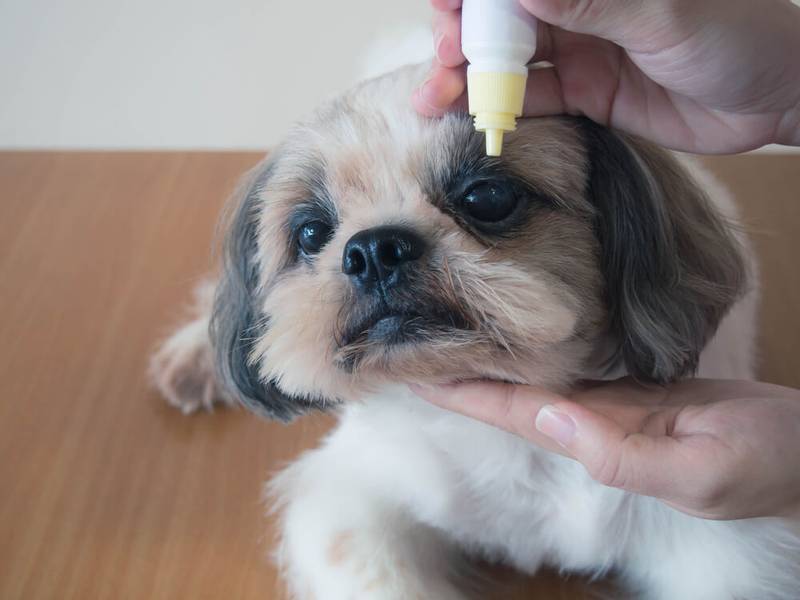
Consequences and predictions
With timely treatment and the implementation of all recommendations, the prognosis is quite favorable. However, much depends on the root cause of the development of conjunctivitis – in some cases it becomes chronic and only causes discomfort and worsens the quality of life of the pet, and in some cases, inaction or improper treatment is fraught with eye loss.
Preventive measures
Prevention is quite simple: avoid irritation of the mucous membrane of the eye (sand, aerosols, etc.) and do not forget about preventive visits to the ophthalmologist if your dog belongs to a breed predisposed to conjunctivitis. It’s not too difficult to keep your pet’s eyes healthy, is it?
The article is not a call to action!
For a more detailed study of the problem, we recommend contacting a specialist.
Ask the vet
October 20 2020
Updated: February 13, 2021





